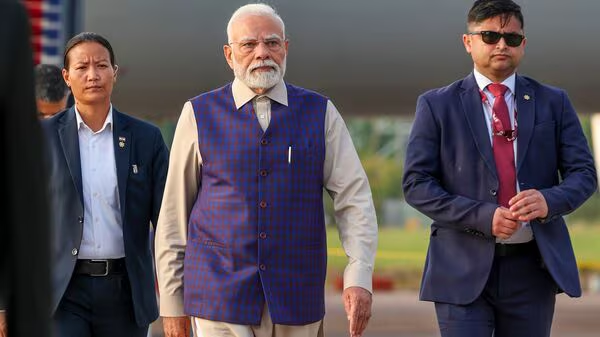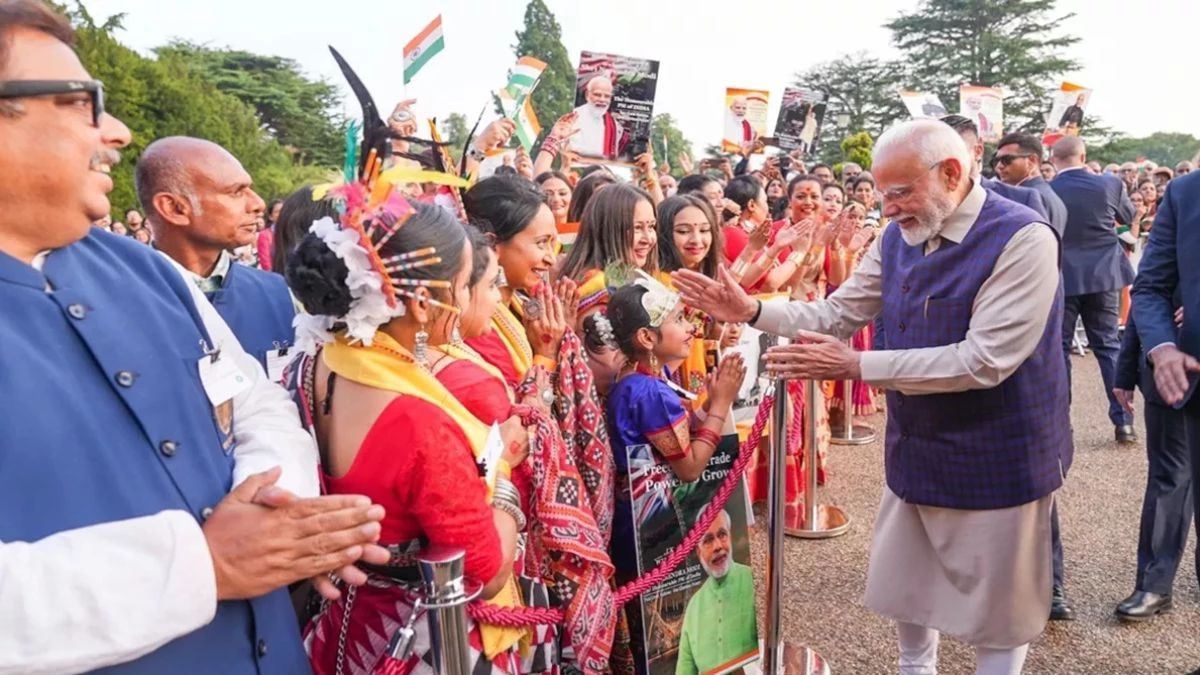Introduction
The evolving global economic landscape has necessitated strong bilateral cooperation between leading economies. In this context, the India–United Kingdom Free Trade Agreement (FTA) represents a significant milestone. As of July 24, 2025, Prime Minister Narendra Modi’s visit to London marks the culmination of nearly three years of intense negotiations. With over 99% of tariffs set to be eliminated, the deal is expected to reshape trade dynamics, boost employment, and open up a vast array of new opportunities for both nations.
I. Historical Background of India–UK Trade Relations
1. Colonial Legacy to Strategic Partnership
India and the UK share a long, complex history of trade dating back to the colonial era. Post-independence, trade relations were defined more by diplomatic distance than economic partnership. However, over the last two decades, the equation has changed, transitioning from legacy challenges to strategic economic collaboration.
2. Previous Trade Frameworks
Before the FTA, trade between India and the UK was governed largely by WTO rules and bilateral investment treaties. Both countries had lower tariff bindings and modest concessions, but lacked the comprehensive frameworks seen in FTAs.

II. The Need for an FTA
1. Brexit’s Push Toward New Markets
Following the UK’s exit from the European Union, it sought to establish independent trade deals with fast-growing economies. India, with its vast market and rising middle class, was a natural choice.
2. India’s Trade Reform Agenda
India’s global trade ambitions under PM Modi’s “Make in India” and “Atmanirbhar Bharat” initiatives provided fertile ground for an ambitious FTA. This agreement dovetails into India’s strategy of reducing dependency on Chinese imports and diversifying trade partnerships.
III. Key Features of the India–UK FTA
1. Tariff Elimination
The most significant feature of the agreement is the removal of tariffs on 99% of goods traded between the two nations. These include:
- Textiles and garments from India
- Automobiles and spirits from the UK
- Pharmaceuticals, gems, and jewelry, benefiting Indian exporters
- Machinery, medical devices, and higher education services from the UK
2. Services Sector Liberalization
India and the UK both have strong service economies. The FTA includes mutual recognition of professional qualifications, easing visa norms, and access to each other’s markets for:
- IT and software services
- Legal and financial services
- Healthcare and education
3. Investment Protections
The deal includes comprehensive investor-state dispute settlement mechanisms (ISDS), promoting confidence among investors from both countries.
4. Intellectual Property Rights (IPR)
Stronger IPR protections were negotiated, benefiting UK tech and pharmaceutical firms while ensuring that India maintains access to affordable generic medicines.
5. Digital Trade and Data Security
Digital goods and services are now recognized as key export areas. The agreement includes provisions for:
- Data flow with privacy safeguards
- E-commerce regulations
- Cybersecurity cooperation
IV. Economic Impact on India

1. Boost to Exports
The elimination of tariffs means Indian exports to the UK will become more competitive, particularly:
- Apparel and textiles
- Leather goods
- Handicrafts and home décor
- Processed food and beverages
This is expected to increase Indian exports by $10–15 billion annually within five years.
2. Employment Growth
Sectors like textiles, IT, and services are expected to generate over 1 million new jobs in India, particularly benefiting MSMEs and rural artisans.
3. Investment Inflows
The FTA is expected to open the floodgates for UK FDI in India, particularly in:
- Green energy and sustainability
- Infrastructure and smart cities
- Banking and fintech
V. Economic Impact on the UK
1. Access to a High-Growth Market
India is now the fifth-largest economy, with over 1.4 billion people. The UK will gain preferential access to:
- India’s rapidly expanding middle class
- Infrastructure development projects
- Educational and healthcare outsourcing opportunities
2. Job Creation and Inflation Control
The UK government projects the deal will create over 100,000 new jobs, reduce the cost of consumer goods, and enhance supply chain resilience.
VI. Strategic and Geopolitical Implications
1. Counterbalance to China
Both nations see the FTA as a step toward creating a democratic trade alliance to counter China’s dominance in Asia-Pacific.
2. Stronger Commonwealth Ties
The deal is seen as a revival of Commonwealth economic cooperation, which could pave the way for wider FTAs involving other member nations.
3. Defence and Tech Cooperation
Though not directly part of the FTA, discussions on joint ventures in aerospace, AI, and cybersecurity have intensified during Modi’s visit.
VII. Challenges and Criticisms
1. Labour and Environmental Standards
Critics in both countries have raised concerns about environmental degradation and labor rights, especially in export-driven manufacturing.
2. Unequal Benefits
There are worries that UK companies in sectors like whisky and automobiles may benefit disproportionately, while Indian farmers may face tougher import competition.
3. Regulatory Hurdles
Implementation will depend on how well both governments handle bureaucratic red tape, customs integration, and dispute resolution mechanisms.
VIII. Industry Reactions
1. Indian Industry
- CII (Confederation of Indian Industry) has hailed the deal as “the most significant trade achievement in a decade.”
- Startup India participants see opportunities in fintech and edtech exports.
2. UK Business Groups
- British Chambers of Commerce welcomed the deal, particularly for SMEs.
- UK universities are hopeful about increasing Indian student enrollment and research collaboration.
IX. Voices from the Political Sphere
1. Prime Minister Narendra Modi
“This is a historic moment. The India–UK Free Trade Agreement is not just about commerce; it’s a bridge of opportunity between two great democracies.”
2. UK Prime Minister (2025)
“Post-Brexit Britain stands stronger with partners like India. This deal is a vote of confidence in our shared future.
X. Looking Ahead
1. Phased Implementation
The agreement will be rolled out in phases over 12–36 months, allowing industries to adapt and ensuring smooth integration.
2. FTA Monitoring Committee
A joint India–UK committee will oversee execution, resolve trade disputes, and propose amendments as needed.
3. Potential for Expansion
The FTA could evolve into a Comprehensive Economic Partnership Agreement (CEPA), covering more areas like defence procurement and space research collaboration.

Conclusion
The India–UK Free Trade Agreement is more than a commercial deal—it’s a bold vision for the future of global trade, one that prioritizes mutual growth, shared values, and long-term cooperation. As India and the UK move forward with implementation, the world will closely watch how this alliance influences global trade architecture in the decades to come.
Share this content:


